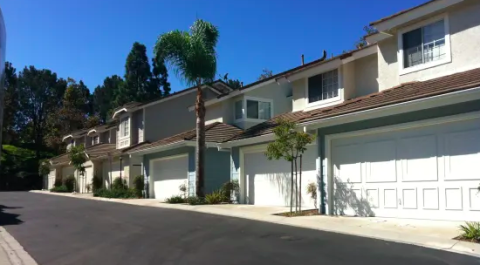This is an independent opinion. Want to respond? Write your own commentary! Email hoa@ivn.us.
We are constantly being told there is a housing crisis in California, and particularly so in San Diego. Developers march under this banner to demand incentives from the government to allow them to maximize the value of their land.
The reality is we have an affordable housing crisis. Developers are building homes for the top 30% of prospective buyers. It is the rest that are being left behind – first responders, young people, and workers in the hospitality industry. In a sense the market is working because developers are responding to demand. But demand means the housing needs of those who have money, not those who only need housing. There is money to be made by selling to those who can pay top dollar – and not much by building for those who cannot.
Put starkly, developers are rational business-people who seek profits. They do not see a profit in providing affordable housing. Sometimes affordable housing is built because San Diego requires a certain percent of units in a multi-family project to be affordable, but developers receive a subsidy for that construction in the form of tax credits. Those affordable units are being built, substantially, by the public.
So how do we get affordable housing? The Linda Vista Planning Group (LVPG) is on the verge of creating an Affordable Housing Task Force to provide options. Recently a project came before the LVPG that provided one additional affordable housing unit than is required by law. In exchange, the developer received five incentives, including busting the height limit and reducing setbacks. The developer was not required to include parking, so no parking was provided.
The proposal mirrors what has been state policy over the past 10 years – offer additional developer incentives such as increased density while requiring some affordable housing. As the Embarcadero Institute noted in a 2018-2019 study, the incentive approach is not working, as California is building less new affordable housing than it did in the 2000s.
The LVPG voted to deny the project. But just saying no is not good enough. Affordable housing is constrained by economics. How can economics be used to provide affordable housing? Let me suggest a few possibilities.
A Housing Bond: In November, San Diegans will have the option of approving a housing bond that would provide money to build 7,500 affordable housing units. While this is a good start, it comes nowhere close to meeting the need. The measure requires a two-thirds vote for approval and will create a long-term increase in property taxes. Both are daunting. The City Council would have been better advised to have financed the bond with the increase in Transient Occupancy Tax proposed by the failed Convention Center expansion measure, Proposition C. A portion of that tax was supposed to go to affordable housing in any event. Moreover, the hospitality industry, which would have been the main beneficiary of the measure, creates greater needs for affordable housing because it also creates so many low-wage jobs. If the housing bond fails passage, perhaps the new majority on the Council will consider future bonds that would be paid for from tourist taxes.
Public Benefit Zoning: When private land is up-zoned to allow more intensive use of land, the value of that land is increased. The increased value is a benefit conferred on the landowner by the public (and frankly, paid for by the public in terms of increased congestion and demands on the infrastructure) without any effort from the landowner, except possibly for lobbying.
Under Public Benefit Zoning, when up-zoning occurs an economic study is undertaken to determine the increase in the land’s value. Then a percentage of that increased value is “recaptured” and used to pay for affordable housing. The payment of the portion of the increased value could be due when building permits are issued.
Redevelopment: Redevelopment ended in California during the Great Recession because the state needed the money. It could be restored in some form when the current economic crisis is over.
Under redevelopment, the tax base of a given piece of land is “frozen.” As property values increase, the tax base of the land above the frozen value becomes available for public investment. It is called the tax increment. There were numerous abuses under redevelopment, but 20% of the increment was reserved for affordable housing. As the Embarcadero Institute reported, redevelopment paid for 80% of the state funding for affordable housing. If redevelopment is restored, it does not need to be a re-enactment of the prior law, but it should be structured to provide funding for affordable housing.
These three ideas are only a starting point. We need to be creative in solving the affordable housing crisis because the need is overwhelming.
